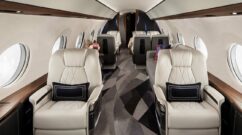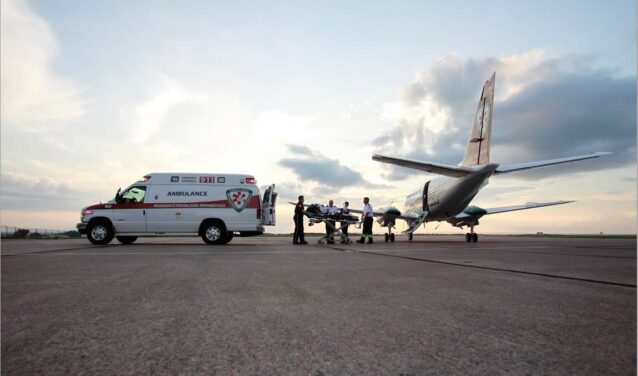Do you need emergency medical transport by Air Ambulance?
AEROAFFAIRES responds to your request for a medical flight anywhere in the world.
In the event of accident or illness, or because of Covid 19 in a foreign country, the first aid offered or the quality of treatment may not be optimal. In such cases, it is preferable to travel urgently to another country, or to return to your country of origin, to benefit from the best care by air. Thanks to our extensive network of private aircraft and helicopters, we can arrange a secure medical flight for you, tailored to your specific situation.
Of the 4.4 billion international travelers in 2018, 300,000 flights were made in response to a medical emergency. In business aviation, medical transport (EVASAN) accounts for 30% of private jet flights (VIP transport, air freight). In the majority of cases, when an ambulance aircraft is requisitioned by medical teams, it is because the patient’s state of health does not allow him or her to fly with an airliner (Not Fit To Fly). In fact, evacuation by air in a private jet is the solution of last resort. It avoids the risk of having to divert a commercial aircraft to land at an airport far from the destination desired by the passenger in need of care.
We tell you everything you need to know about a medical flight or air ambulance, and why transferring patients by medical aircraft or air ambulance offers so many advantages.
Definition of medical transportation
Medical transportation is the transfer of a patient that is sick, injured or otherwise incapacitated to a healthcare facility such as a hospital or an intensive care unit. This also covers transporting the person after the care service is provided. The different types of medical transportation are common carrier, life support and special transportation.
There are two types of transportation:
Primary transport

Transporting a patient from the scene of an accident to a medical facility. This is also known as evacuation.
Secondary transport
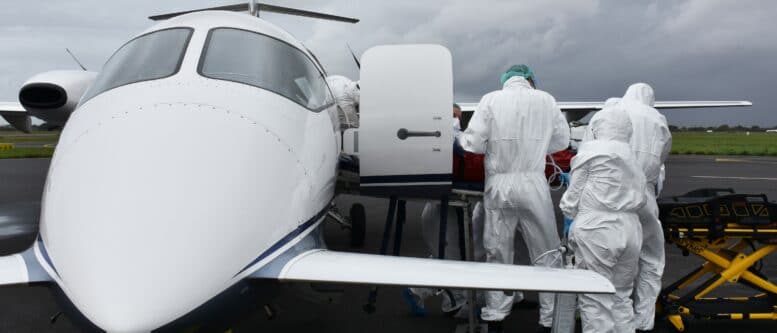
Transporting a patient from one care facility to another (e.g. medical appointments, convalescence, etc.).
There are several ways to provide medical transport:
- Transport by ambulance or similar medical vehicle.
- Helicopter, especially when the transport must be carried out quickly and when the victim’s place of care is rough.
- Airplane, when the repatriation must be carried out over a long distance and duration.
Our planes and helicopters are available to a wide range of customers for medical transport:
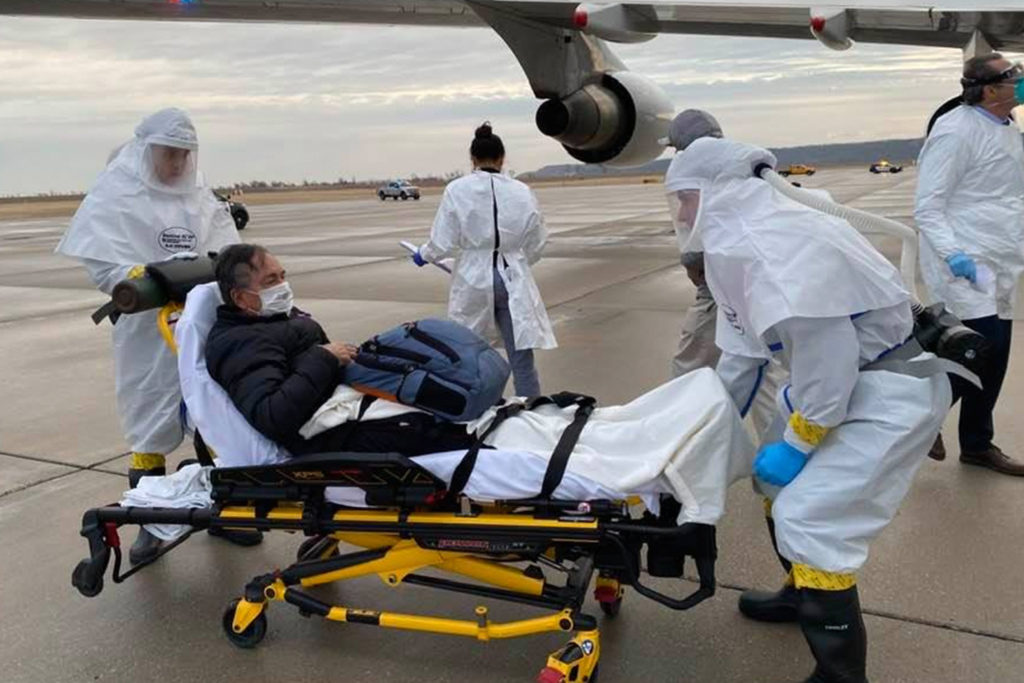
- Uninsured individuals
- Assistance companies (International SOS, Europ Assistance, Mondial Assistance, etc.)
- Companies and industries
- Hospitals, clinics and emergency medical services (APHP Paris, MEDAIR, TURPAN…)
- Embassies and governments
- Insurance companies (AXA, CHUBB, GENERALI, SWISSLIFE…)
- Non-governmental organizations (UN, UNICEF, Médecins du Monde, Médecins Sans Frontières, etc.)
Medical evacuation conditions
Our doctors, requisitioned for a medical flight, assess the patient’s condition and decide whether the flight is feasible, necessary or compulsory.
There are a number of subtleties to be aware of with RAPASAN or EVASAN:
- Our doctors are responsible for the patient’s state of health. They are qualified to transport the sick and injured by air in the best possible conditions, and have very specific knowledge.
- The professional at the receiving hospital is relieved of all responsibility. That’s why our doctor is the only one to make decisions on medical flights. In the event of complications, our doctor will consult the family and the medical department of the receiving hospital before making a decision.
- The responsibility of our expert implies that the attending physician of the hospital of stay cannot prevent an EVASAN or a RAPASAN.
Our doctors need to know the patient’s complete medical history. It is essential that you provide us with this information from the 1st exchange, so that we can respond as quickly as possible to your request for a medical flight.
Information required to charter an air ambulance
In some very specific cases, further information may be requested and forms completed.
The 3 essential pieces of information :
- Contact details for the doctor in charge of the patient.
- Details of the doctor and hospital where the patient is going.
- The patient’s medical file.
What are the conditions for reimbursing the cost of medical air transport?
There are several ways to pay for medical air transport.
Repatriation insurance
Before a trip, you can take out a repatriation insurance policy. This ensures that, in the event of a serious health problem (accident, illness, injury, etc.), the patient is taken care of and repatriated to his or her home or to a hospital suited to his or her state of health. Before departure, it is advisable to find out about the state of health in the destination country, and to check the cost of medical expenses, which can be particularly high in some parts of the world (e.g. Canada, USA, Japan). Taking out an insurance policy can make repatriation easier.
Is repatriation insurance useful if an individual dies abroad as a result of an accident? Yes, the contract generally provides for special logistical services such as coffining and repatriation of the body.
Repatriation by the Minister of Foreign Affairs
In cases of extreme urgency, and for patients who have no resources of their own, the French Ministry of Foreign Affairs can provide financial assistance for medical repatriation from abroad. Depending on the request and the funds available, the French government may pay for the repatriation of a French national on a “free” basis. The patient’s medical file is then reviewed by the Consulate and the local doctor to determine whether or not repatriation is necessary.
VISA card reimbursement
When a trip has been paid for with a Visa card, medical repatriation is automatically taken into account. Various family members are covered: the cardholder, spouse or partner, children and grandchildren under 25. Check the contract signed with your bank when you obtained your Visa card to find out up to what limit the patient can be reimbursed.
Reimbursement via Social Security or mutual insurance company
- Abroad: depending on the patient’s country of origin, Social Security may cover part of the medical expenses incurred during repatriation. If necessary, the patient’s mutual insurance company may take over. It is advisable to contact these organizations directly before leaving on your trip.
- In France: medical transport in France may be reimbursed up to 65% of the total cost by the local health insurance fund. Pregnant women over 6 months, newborns requiring hospitalization, chronically ill patients, victims of industrial accidents and certain pensioners may be reimbursed at 100%. There are different modes of medical transport, but reimbursement is based on the least expensive means of transport. For example, if you travel by air, Social Security will cover 65% of the cost of an economy-class ticket.
Please note that if the repatriated person does not fall into any of the above categories, it is up to him or her to cover the cost of transport and repatriation. If they are accompanied, it is also up to them to ensure the repatriation of their family members.
What is a medical flight?
A medical flight is the transportation of a person by air for a medical need. Generally referred to as “airborne medical assistance”, a medical aircraft can transport a patient as quickly as possible, while providing the best possible care. In other words, it responds to an emergency in a sometimes critical health context.
Sanitary flights meet several needs:
- Medical repatriation (RAPASAN)
- Medical evacuation (EVASAN)
- Medical transport
- Medical tourism
- Pediatric or incubator transport
- Repatriation of bodies
- Organ transport
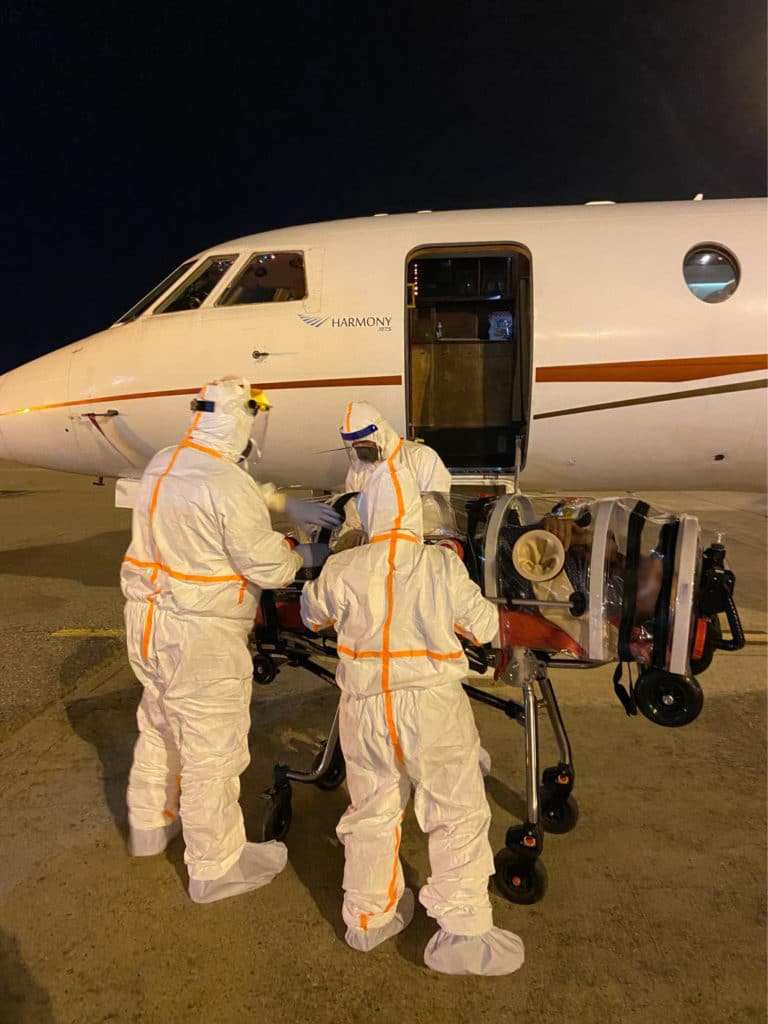
What is an air ambulance?
A medical aircraft or air ambulance enables patients to be transported quickly and safely over medium and long distances. Classic private jets are configured and transformed to carry out medical operations on board.
Our air fleet enables us to adapt more quickly than commercial (charter) aircraft, to all patient diagnoses without restriction. Whether it’s a private jet or a turboprop, all our medical transporters are configured with medical equipment to accommodate the most critical cases (air-conditioned spaces, oxygen tank, artificial respirator, defibrillator, electrocardiograph). Aircraft are specially prepared to offer intensive medical facilities and specific on-board personnel.
Medical equipment is added to the air ambulance if required. Sick passengers can be transported seated or lying down. And the medical team can be augmented to ensure safe evacuation in the event of a life-threatening situation. We adapt to every patient situation.
What are the advantages of sanitary aircraft?
The air ambulance offers many advantages for patients:
- Your flight is fast and comfortable
A medical flight is carried out in a private jet such as a Falcon 8X or Falcon 900 (from aircraft manufacturer Dassault Aviation), particularly for evacuations from the French West Indies to France. These modern aircraft are equipped with cutting-edge technology for a fast, quiet and calm flight.
- The flexibility offered by business aviation
Medical aviation adapts to patient needs and vital urgency. There’s no need to wait in an airport terminal. Take-off times are flexible, and the plane can be chartered in less than 2 hours. You then fly direct to your final destination without a stopover.
- Extended access to airports and airfields
Many airliners cannot land at all airports. Thanks to medical aviation, patients and medical teams can travel to over 3,000 destinations. For example, the Pilatus PC-12 turboprop is widely used in remote areas for medical evacuations (EVASAN). It enables you to take off and land at provincial airfields with short runways, as close as possible to your medical facility.
- An ultra-safe flight in a medical aircraft
In the event of a life-threatening situation, there are a number of solutions and adjustments that can be made to ensure that the journey goes smoothly. First of all, cabin pressurization can be adjusted to the same level as on the ground. What’s more, with a medicalized flight, you’re accompanied by a team of doctors and nurses dedicated to stabilizing the patient’s state of health. Finally, in the event of complications during flight hours, the aircraft can make an emergency landing at the nearest airport.
What type of medical aircraft for repatriation?
Whether turbo-propelled or jet-powered, a medical aircraft offers both comfort and safety for patients requiring medical repatriation or evacuation.
- Turboprop aircraft
It is slower than the jet ambulance, which has a jet engine. Nevertheless, the price of a flight is more attractive. It can also land on short runways at small regional airports, which a jet cannot do. Finally, for long distances or flights over the sea, the jet ambulance is the preferred choice.
- Jet ambulance
Ideal for emergency medical flights requiring repatriation over long distances, such as intercontinental flights, as it is extremely fast (Boeing 787-8, for example).
How does it differ from an airliner?
Medical flights by airliner are the most economical solution, but do not offer any of the services offered by medical aircraft.
- Your flight will be in 2nd class on a stretcher or in business class in a sleeper seat.
- The medical care offered is less extensive. You have the possibility of being accompanied by a medical team, but no intervention or intensive care equipment can be brought on board.
- You are dependent on the air traffic schedules and airports offered by conventional airlines. And for long-haul flights, there are usually stopovers, which can be very stressful for the patient.
- The cabin pressure of a commercial flight cannot be optimized. Depending on the type of trauma, too great a discrepancy with the pressure on the ground can cause pain and sometimes complications.
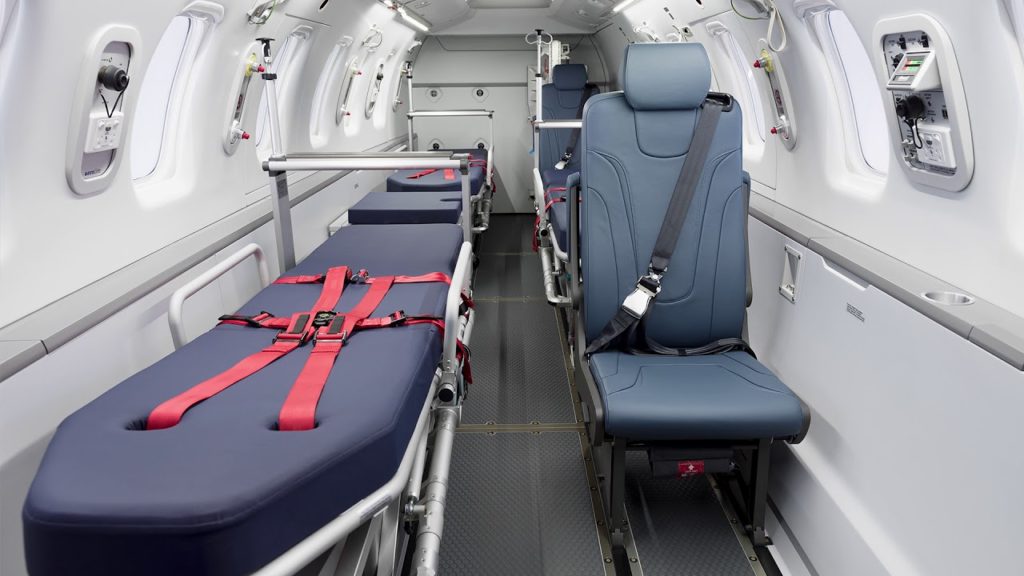
Depending on your state of health and your assistance company, a medical flight on an airliner may be a good alternative. Depending on the urgency of the situation and the patient’s state of health, a medical flight on a dedicated aircraft may be the only solution, particularly in the case of seriously injured patients who do not have authorization to fly on a commercial airline.
Our medical flight services
Medical repatriation (RAPASAN)
A medical repatriation is a transport of a patient suffering from health problems, repatriated to their country or city of origin. Repatriation is carried out to offer better quality care or better monitoring to the patient’s place of residence.
Medical evacuation (EVASAN)
Generally used in the military field, but also in the air force, the term “medical evacuation” is also used in civil aviation to designate the medical evacuation of an injured or sick person in order to provide appropriate care. MEDEVAC is emergency transport. The evacuation is linked to a war, a pandemic, or the impossibility of providing the necessary care. A medical aircraft is then chartered to leave the dangerous zone via the air network and reach the nearest appropriate medical facility.
Medical air transport (MEDEVAC)
Medical transport is the transfer of an injured or sick person between a point A and B of your choice. The aim is to move a patient to another healthcare facility of your choice. From London to Bordeaux, from Milan to Zurich, we can meet all your needs, whatever country you’re in, or where you’d like to be hospitalized.
Medical tourism by air ambulance
If you want to leave your home country for a medical operation abroad, choose medical tourism. Many patients choose to be hospitalized in a foreign country for a variety of reasons: lower costs, quality of care on offer, medical capabilities and authorizations. For example, many French people choose countries such as Switzerland, Austria or Israel for cosmetic surgery, dental surgery or infertility treatment. With medical air travel, you can enjoy a flight in optimum comfort.
Pediatric or incubator transport by medical aircraft
A young child or even a newborn who has had an accident while on vacation will not always be able to benefit from the appropriate care in all establishments. Carrying out an EVASAN or RAPASAN can be decisive for your child’s health. Babies, in particular, have fragile bodies, so transporting them is a delicate task. We can provide you with a medical team specialized in infant medicine. In the event of premature delivery in an unsuitable hospital, you can request medical transport in which an incubator will be installed to keep your child healthy during the transfer. Our equipment is state-of-the-art, so you can be sure of a worry-free journey.
Transporting a body by air ambulance
The repatriation of a body or funeral urn involves a lot of logistics and authorizations. In this sad situation, our experts are on hand 24/7 to take care of all the formalities involved in transporting the body by medical aircraft.
You can consult our articles on repatriating a body to Algeria or Morocco if required.
Organ transport by air ambulance
The transportation of organs is a very delicate business, with important issues of speed, hygiene and preservation. Our team can provide you with turboprops and helicopters capable of landing as close as possible to the medical facility.
The benefits of our emergency air services
24-hour service
Our aviation experts are available 24/7 to respond to your charter request and answer any questions you may have. We also provide follow-up care until the patient arrives at home or in hospital.
Bed-to-bed transfer
In addition to your medical flight, we prepare your transfer from the airport to the hospital by ambulance for a rapid “bed-to-bed” transfer.
Special presurization
A change in atmospheric pressure can lead to fatal complications in certain diseases. Our aircraft are equipped with special technology to modify the pressure in flight and ensure a safe transfer.
We are available 24/7 to answer all your questions.
Administrative support and full translation of important documents. Our network of partners gives us access to a sworn interpreter who will accompany you throughout your flight abroad. What’s more, we can help and advise you on entering a country and setting up a specific medical service.
The documentation required to book a medical flight includes an initial contact with information on the itinerary and the patient’s condition, departure and arrival addresses, a medical report from the doctor or an interview between doctors at the departure and arrival points, and an identity card, passport or visa, depending on your situation. This information will be used to plan your flight.
Price of a sanitary flight
We offer you quality medical and healthcare flights at the best prices. Criteria such as itinerary, patient’s condition, number of people, ground transportation and flight planning time will determine the price. Ambulance costs may also vary from country to country. We will respond to all your requests and make sure your trip runs smoothly. AEROAFFAIRES can organize your ground transfer, offering a customized option in line with your flight. What’s more, our large fleet of aircraft enables us to adapt to your every need.
Flight prices vary according to several factors:
- Aircraft type
- Medical equipment and treatments required on board
- Travel distance
- Additional services
Air ambulance flight: sample price
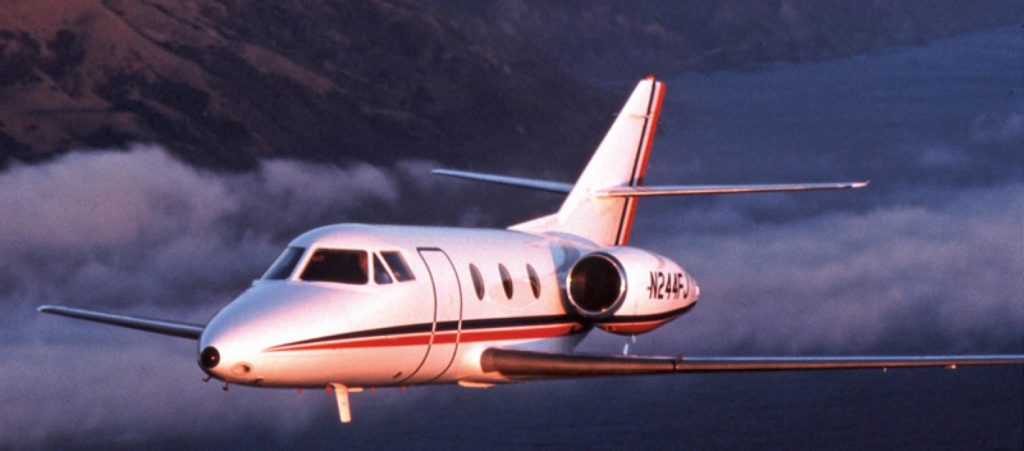
Sanitary flight between Marrakech and Paris
Price : from 15 000 €
Type of service : EVASAN
Flight duration : 3 hours
Our airline experts are on hand 24/7 to find your sanitary flight and answer all your questions (baggage, passports, fares, aircraft models, etc.).
Read our articles on repatriation from Morocco to France and medical repatriation from Thailand to France.
What is an air ambulance?
An air ambulance is a rapid and medicalized mode of transportation for individuals needing medical assistance. It can cover medium to long distances.
Air transport allows for the medical repatriation of the most critical cases. During a medical repatriation, medical personnel may need to perform surgical operations on board. Therefore, an air ambulance requires a fully optimized configuration for such transport, equipped with specific medical devices.
Onboard an air ambulance, the patient can be transported seated or lying down. The medical personnel may be supplemented by onboard teams to ensure a safe medical evacuation by air.
Booking a private air ambulance for medical transports offers numerous advantages.
Firstly, an air ambulance can potentially land at over 3,000 destinations, unlike a commercial aircraft. For example, air ambulances are frequently used in remote areas, such as provincial airfields, allowing for landing as close as possible to the medical facility of destination.
Secondly, another advantage of a private air ambulance is its high availability. It is possible to instantly book an aircraft for medical assistance or evacuation, depending on the urgency of the transport. The major difference between an air ambulance and a commercial aircraft in the case of an emergency is schedule flexibility.
What types of air ambulances are used for repatriation?
Among existing aircraft fleets, two types can serve as air ambulances. Medical transports are generally conducted using turboprop or jet aircraft. Regardless of the type, an air ambulance ensures safe and comfortable medical repatriation.
- Turboprop Air Ambulance: A turboprop air ambulance is slower than a jet ambulance. It is ideal for short-distance flights. Unlike a private jet, it can land at small airports. It is not the preferred mode of transport for long-haul flights. However, medical repatriation by turboprop is more cost-effective than by jet ambulance.
- Jet Air Ambulance: A jet air ambulance allows for faster medical transport and can cover long distances. A jet ambulance is preferable for urgent repatriation on intercontinental flights, for example.
Medical repatriation by Air: at what cost?
The cost of medical repatriation by air varies depending on the context. It’s essential to inquire with air transport brokers or private air transport companies. You can contact them by phone or through their websites. Professionals in air ambulance transport can address all types of requests, from medical evacuations to body repatriations, including medical tourism for cosmetic surgery, for example.
The cost of air medical transport depends on several factors. The urgency of the request affects the price. If the transport requires minimal or no medical personnel onboard, the cost remains manageable. However, if an in-flight operation necessitating a full surgical team is required, the price increases. Thus, the number of personnel onboard is a critical factor in the flight’s cost.
The medical equipment used also impacts the cost: the more sophisticated the equipment, the higher the expense.
Lastly, the distance between the departure and arrival points significantly influences the price. The cost will differ if the flight is within France or across the ocean.
Once the request for an air ambulance is made, a quote is promptly provided for efficient medical repatriation by air. You can then book an air ambulance or any other type of medical air transport.
The necessary authorizations for chartering an air ambulance are handled directly by the professionals in the field. After confirming the reservation, you receive a detailed plan for the medical air transport journey.



